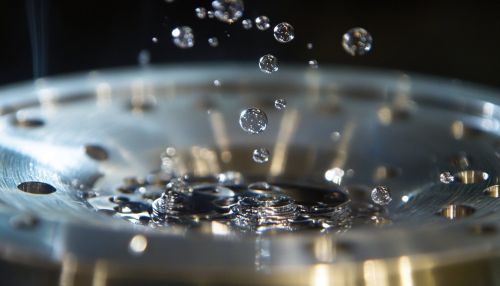Electrochemical Nitrate Reduction in High Entropy Alloys
Introduction
Electrochemical nitrate reduction is a promising approach for the conversion of nitrate ions (NO₃⁻) into nitrogen gas (N₂) or other reduced nitrogen species. This process is particularly relevant in the context of environmental remediation, where nitrate contamination in water sources poses significant challenges. High entropy alloys (HEAs) have emerged as a novel class of materials with unique properties that make them suitable candidates for electrochemical applications, including nitrate reduction. This article delves into the mechanisms, material properties, and potential applications of electrochemical nitrate reduction using high entropy alloys.
High Entropy Alloys: An Overview
High entropy alloys are composed of five or more principal elements mixed in near-equiatomic ratios. This composition leads to a high configurational entropy, which stabilizes the solid solution phase and results in unique mechanical, thermal, and chemical properties. Unlike traditional alloys, which are based on one or two primary elements, HEAs exhibit a complex microstructure that can be tailored for specific applications.
The microstructure of HEAs is characterized by a single-phase solid solution, often face-centered cubic (FCC) or body-centered cubic (BCC), although multiphase structures can also occur. This microstructural complexity contributes to their remarkable properties, such as high strength, excellent corrosion resistance, and superior thermal stability. These characteristics make HEAs attractive for various applications, including catalysis and electrochemical processes.
Electrochemical Nitrate Reduction Mechanism
The electrochemical reduction of nitrate involves a series of complex reactions that can lead to different products, depending on the electrode material and reaction conditions. The primary goal is to reduce nitrate to nitrogen gas, thereby mitigating its environmental impact. The overall reaction can be represented as:
\[ \text{NO}_3^- + 10\text{H}^+ + 8\text{e}^- \rightarrow \text{N}_2 + 5\text{H}_2\text{O} \]
However, intermediate products such as nitrite (NO₂⁻), ammonia (NH₃), and other nitrogen species can also form. The selectivity and efficiency of nitrate reduction depend on factors such as the electrode material, pH, temperature, and applied potential.
In HEAs, the presence of multiple elements can create a synergistic effect that enhances the catalytic activity and selectivity for nitrate reduction. The unique surface properties of HEAs, including high surface area and active sites, contribute to their effectiveness as electrocatalysts.
Properties of High Entropy Alloys for Nitrate Reduction
HEAs offer several advantages for electrochemical nitrate reduction:
1. **Catalytic Activity**: The diverse elemental composition of HEAs provides a wide range of active sites, which can facilitate the adsorption and reduction of nitrate ions.
2. **Stability**: HEAs exhibit excellent chemical and thermal stability, which is crucial for maintaining performance in harsh electrochemical environments.
3. **Corrosion Resistance**: The inherent corrosion resistance of HEAs ensures long-term durability of the electrodes, reducing the need for frequent replacement.
4. **Tunability**: The composition of HEAs can be tailored to optimize their catalytic properties for specific reactions, including nitrate reduction.
Experimental Studies and Findings
Recent studies have explored the use of various HEAs for electrochemical nitrate reduction, demonstrating promising results. For instance, HEAs composed of elements such as nickel, copper, iron, and cobalt have shown enhanced catalytic activity and selectivity compared to traditional metal catalysts.
One study investigated the performance of a NiCoFeCrMn HEA electrode in nitrate reduction. The results indicated a high conversion efficiency to nitrogen gas, with minimal formation of undesirable byproducts. The study attributed this performance to the synergistic interaction between the constituent elements, which created a favorable environment for nitrate adsorption and reduction.
Another research effort focused on the role of surface modification in enhancing the catalytic properties of HEAs. By introducing surface defects and increasing the surface area, researchers were able to further improve the nitrate reduction efficiency of HEAs.


Challenges and Future Directions
Despite the promising potential of HEAs for electrochemical nitrate reduction, several challenges remain. The complexity of HEA compositions makes it difficult to predict their behavior and optimize their performance for specific applications. Additionally, the cost of producing HEAs can be higher than that of traditional alloys, which may limit their widespread adoption.
Future research should focus on understanding the fundamental mechanisms of nitrate reduction on HEA surfaces and developing cost-effective synthesis methods. Advances in computational modeling and machine learning could play a crucial role in predicting the properties of new HEA compositions and guiding experimental efforts.
Applications and Implications
The successful application of HEAs in electrochemical nitrate reduction could have significant implications for environmental remediation and sustainable energy. By efficiently converting nitrate pollutants into harmless nitrogen gas, HEAs could help address the issue of nitrate contamination in water sources. Furthermore, the insights gained from studying HEAs could inform the development of other catalytic processes, such as hydrogen evolution and carbon dioxide reduction.
